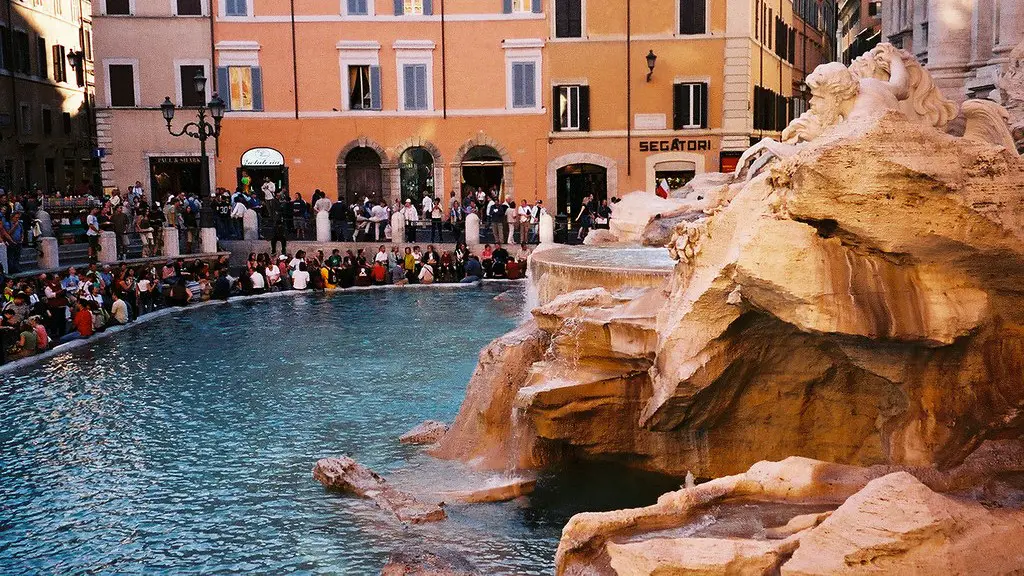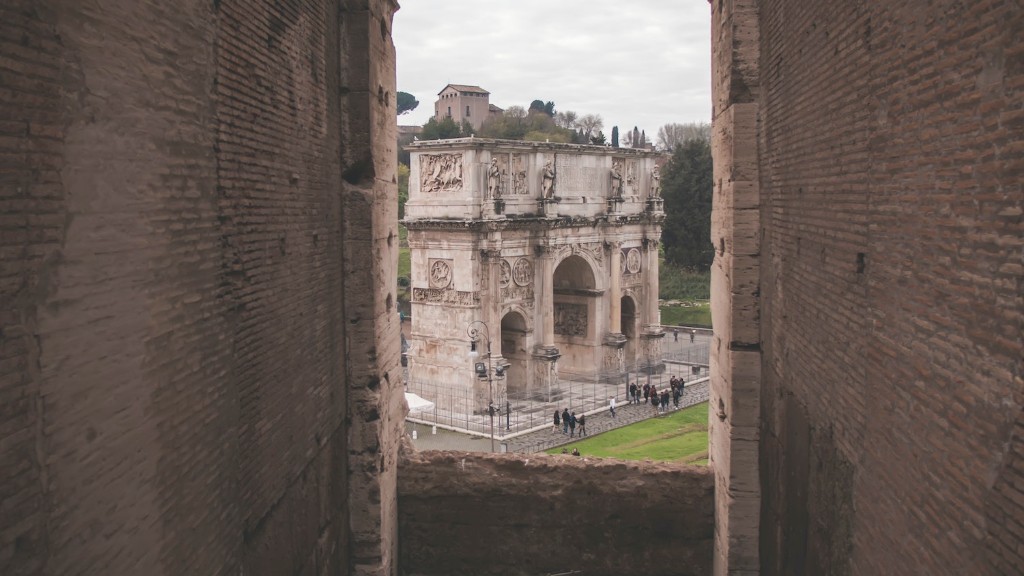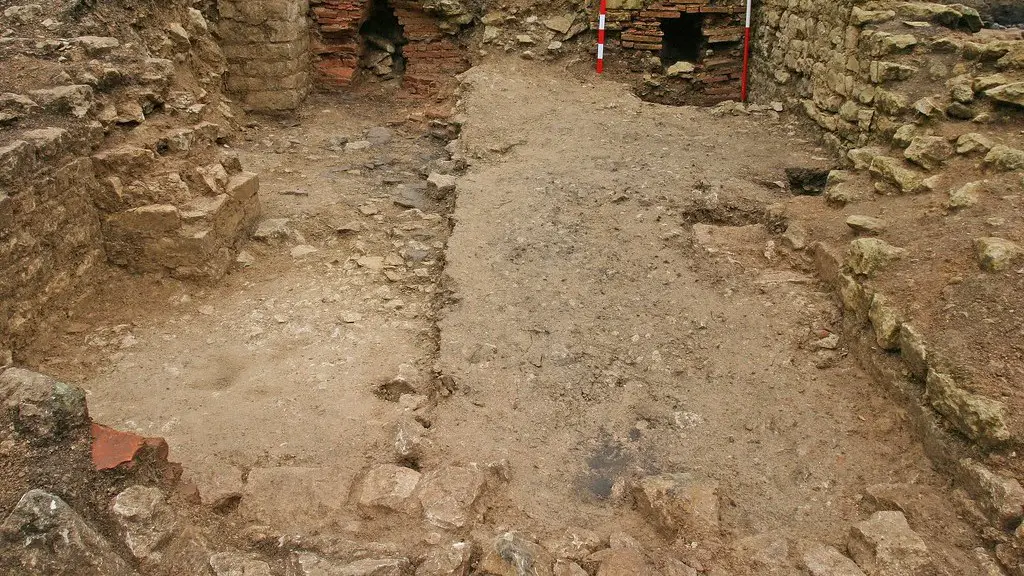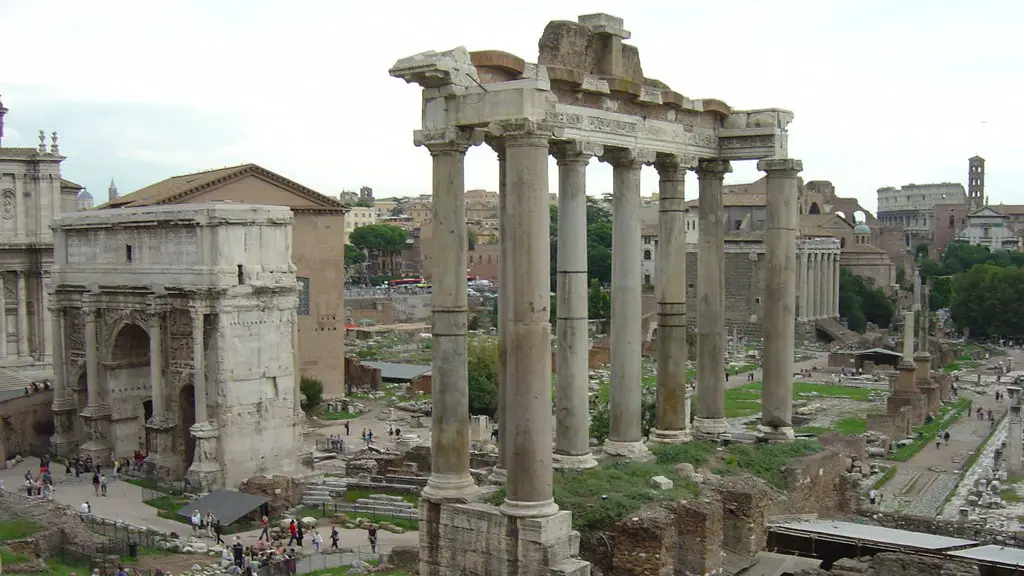Most people know of the great empire of Ancient Rome, but few are aware of which river it was built next to. It is important to note, however, that Ancient Rome was built on and around the banks of the Tiber River. This river was vital in facilitating the Roman culture and way of life, as it provided a significant source of water, transportation, and defensive protection.
The Tiber River is located in central Italy, and runs roughly 250 kilometers (155 miles) from its source near Subiaco in the Apennine Mountains to the Tyrrhenian Sea in the Italian port of Ostia. The mouth of the river is located approximately 15 kilometers (9 miles) from the Mediterranean Sea. The river has a basin area of about 15,540 square kilometers (6000 square miles).
The Tiber Floodplain, which is located along the banks of the river, is where Ancient Rome was built. This area, due to its strategic location, was not only easy to access for many years but also provided the city with the resources it would need for growth. The Tiber River allowed for early Roman trade, transportation of materials, and communication with other areas, helping to make Rome one of the most powerful cities of the ancient world.
Historians also note that the Tiber River played an important role in defending Ancient Rome. During times of war or attack, the city could be easily defended due to its strategic location at the side of the river. The river also provided a great opportunity for ships to come and go, helping with transportation, communication, and the growth of the Roman culture through the import of foreign goods and ideas.
Many experts have argued that the Tiber River was one of the main contributing factors to the success of Ancient Rome. The strategic and advantageous position that the river provided not only enabled the Romans to trade and transport goods but also to defend themselves from attack. It is no surprise, then, that the city of Rome chose to settle along its banks and use the river to their advantage.
Environmental Impact
The Tiber River has had a noticeable environmental impact, as well. The pollution that was caused by the Romans’ technological advances and industry resulted in significant damage to the river’s water quality. This degradation of the river’s water was mainly a result of the Romans’ use of lead, particularly for plumbing and storage purposes, which caused lead to leach into the river. In addition, the Romans developed drainage basins to store sewage which, again, caused a decline in water quality.
The environmental impact of the Tiber River has been felt not only in the Roman Empire, but also in modern times. For instance, in recent years, the river has suffered from eutrophication, an increase in nutrient levels as a result of pollution, which is likely to have a detrimental effect on the animal species that are native to the Tiber River, including fish and amphibians.
The modern-day pollution of the Tiber River is a stark reminder of the impact industrial development and technological advances can have on the environment. It is estimated that the water quality of the river has declined by as much as 90 percent since the Roman Empire, signifying just how significant the Romans’ usage of the river had been.
Conclusion
It is clear that the Tiber River played an integral role in the history and development of Ancient Rome. Not only did it provide a vital source of water, transportation, and protection for the Roman people, but it also facilitated other aspects of the Roman culture, such as trade and communication. In addition, the river’s environmental impact illustrates the potential negative consequences that large-scale development and industrialization can have on the environment.
Infrastructure Advancements
The Romans also made some careful advancements in the infrastructure of the Tiber River. One example is the construction of the first ever stone-arch bridge, the Pons Sublicius, which was built in the 6th century BC. This bridge allowed for safe passage to cross the Tiber, and in turn facilitated communication, trade, and transportation between areas.
In addition, the Romans also constructed a wide range of other infrastructure along the banks of the Tiber, including ports and canals. These ports and canals enabled merchants to transport goods to and from Rome and other regions, which no doubt played a significant role in assisting with the growth of the city.
Although the Romans did not make large-scale alterations to the Tiber River, they made some clever and innovative deployment of the infrastructure along its banks. This included the construction of bridges and ports, which not only facilitated communication, but also enabled trade and transportation.
Ancient Roman Impact
The Romans had a clear impact on the Tiber River, beyond its strategic placement for transporting goods and providing for defense. The Roman aqueducts were constructed to increase the water supply for Rome. This also resulted in improved sanitation and hygiene, as the Romans were able to reduce the amount of stagnant water along the river.
The Romans also embarked on multiple engineering projects along the river, including the excavation of several canals. These canals enabled the citizens to access and transport goods from other regions to Rome. This was perhaps one of the most significant accomplishments of the Roman Empire, as it had an exponential effect on their trading capabilities and economy.
The Romans also constructed several ports at various points along the river. These ports enabled sea-faring ships to safely dock and transport goods to the Roman Empire. This was an essential development in the growth of Rome, as it allowed for goods and materials to be distributed to other areas.
Cultural Development
The Tiber River was important not just for trade and transportation, but also for the cultural development of Ancient Rome. The tributaries of the river provided the city with a range of materials, including timber and clay, the two main ingredients for building construction in Rome. As a result, the Tiber allowed for the growth and development of the Roman Empire in a practical and economical way.
The river also allowed for trade and communication with other regions, providing a layer of protection for the Romans and allowing for new ideas and cultures to be shared. This cultural exchange was a key contributor to the growth of the Roman civilization, and had a visible impact on the culture and customs of the time.
The impact of the Tiber River on the culture and development of Ancient Rome was immense, and its legacy is still evident today. From infrastructure advancements to trade and transportation, the Tiber provided the Roman Empire with the resources and protection necessary for it to become the greatest empire the world had ever known.




